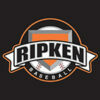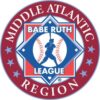UAMBA Coaches Manual
Mission Statement:
The mission of the Upper Allen Mechanicsburg Baseball Association (UAMBA) is to provide a wholesome atmosphere for the youth of Mechanicsburg School District to participate in organized baseball. Furthermore, we intend to establish a structure that will result in well thought out and consistent philosophy that spans the entire duration of the players experience with the organization. We will treat all participants fairly and equally, regardless of their abilities. We will place the players, their families, and our facilities ahead of all other considerations. Players who demonstrate skills and maturity advanced for their age may be placed in the next level of competition during the season to best challenge and advance their development. The Directors of UAMBA are committed to remaining financially strong to provide the best equipment, activities, and facilities for our membership.
The Coaches:
This manual has been developed to provide guidance to coaches at all levels so that they can best understand the philosophy, initiatives, and limitations that exist within the overall framework of UAMBA. Our intention is to introduce each fundamental or skill, usually to a small degree of the whole, at an early age and then to reinforce and expand the players’ understanding of it, as their development progresses in the years to come.
In order to apply a consistent, organization-wide approach to player learning and skill development, it is critical that our coaches are provided with the proper information and guidance to accomplish the task. This manual is not intended to be a “one size fits all” document. Clearly, players will develop at different rates and it is important that we recognize those differences. It is our hope that this manual, along with the coaches’ clinics and mentoring program, will provide the structure by which we can more properly evaluate the skill levels of our players.
The role that we as youth recreation coaches play is an important one. For the younger player, often we are the first adult that they will learn from who is not a parent or relative. We should take care to protect the trust that is inherent in this role. It is our hope that our approach of providing the information and framework for you to work within, we can best serve the needs of our players and their families, and meet the objectives of our organization.
T-Ball/Quick Ball (4 Year Olds)
Philosophy and Objectives:
Introduces first year players to the game of baseball. The focus of this level is to promote fun and enjoyment in a non-competitive environment. Soft squishy balls and plastic bats are used to maintain safety. No scores or records are kept and every batter in the lineup bats every inning regardless of defensive outs (players called out are removed from the base pads). While some basic skills are introduced, the intention is not to teach in great depth but rather to promote the fun aspects of baseball. Skills should be taught in small increments through drills that make learning almost transparent to the player. As skills are mastered, new ones can be gradually introduced and mastered in future years. Coaches are expected to play all players in all positions regardless of their individual skill unless safety is a concern. There are no strikes outs or walks at this level.
Key Initiatives:
- Learning position locations and requirements
- Learning safety
- Introduce basic level game rules
- Introduce basic hitting techniques
- Introduce basic fielding techniques
- Introduce proper throwing techniques
- Introduce proper running posture
Jr. Pony (5 & 6 Year Olds)
Philosophy and Objectives:
This level also is intended as an introductory level to the game of baseball. The focus is to promote fun and enjoyment in a non-competitive environment. Softer baseballs are used to encourage safety. No scores or records are kept and every batter in the lineup bats every inning regardless of defensive outs (players called out are removed from the base pads). While some basic skills are introduced, the intention is not to teach in great depth but rather to promote the fun aspects of baseball. Skills should be taught in small increments through drills that make learning almost transparent to the player. As skills are mastered, new ones can be gradually introduced and mastered in future years. Coaches are expected to play all players in all positions regardless of their individual skill unless safety is a concern. Three balls are pitched to each player via a pitching machine. The ball is placed on a tee for players who are unable to hit the pitched ball after three pitches. There are no strikes outs or walks at this level.
Key Initiatives:
- Learning position locations and requirements
- Learning safety
- Introduce basic level game rules
- Introduce basic hitting techniques
- Introduce basic fielding techniques
- Introduce proper throwing techniques
- Introduce proper running posture
Sr. Pony (7 & 8 Year Olds)
Philosophy & Objectives:
Our objective is to expand the players’ understanding of game rules, basic position recognition and to introduce base running concepts throughout the season. At the age of 7 years old, boys and girls participating in our Sr. Pony level will experience a competitive situation for the first time as score keeping is introduced. Most players will now begin to develop a desire to play a specific position. However, all players should continue to play a variety of positions throughout the year. The emphasis is placed on teaching baseball skills, as winning and losing are de-emphasized. Standings are not kept, but the concept of winning is an obvious outcome of succeeding at hitting and pitching and defensive opportunities. A playoff structure or tournament is introduced at the end of the regular season where winning and losing plays a role in a team’s advancement. When short term successes conflict with the longer term player development gains, it is always our desire to opt for the course that will likely result in the player’s benefit in future years. Coaches and managers need to manage the behavior of not only the players, but also the spectators. We recognize that children master skills in varying time frames and those less talented players at this level may be sensitive and insecure about their performances. Coaches and managers should encourage and support all players at all times regardless of performance. While base running restrictions that existed at the previous level are now lifted, it is not the intention to allow wild base running that would never be attempted at a more advanced level. Baserunners learn to take an extra base on an overthrow, extra base hit and stealing (3rd base only) is introduced. It is the role of the managers and administrators of UAMBA to prepare players from all skill levels for the next level and at no time should the desire to win supersede this philosophy. Pitching skills are introduced at this level as well. Patience and continued encouragement are needed as future pitching stars will struggle to find the strike zone at this level. Emphasis should be placed on teaching pitching fundamentals more than performance. There are no walks at this level. If the pitcher throws a 4th ball, a pitching machine is used to complete the at bat. Generally, the first 4 innings will be kid pitch and the last 2 innings all pitching machine pitch.
Key Initiatives:
- Pitching fundamentals
- Refinement of fielding techniques
- Refinement of hitting techniques
- Refinement of throwing techniques
- Catching position requirements
- Base running
Minors (8 to 10 year Olds)
Philosophy and Objectives:
League standings are introduced at this level in addition to score keeping which was introduced at the Sr. Pony level. Winning takes on additional importance. However, it should not override the overwhelming requirement of the coach to prepare the players for the Major level. While there is a league championship, Minors is still an instructional level and the manager’s primary emphasis should be on player development. The level of player talent in the Minors level is diverse. The coach must recognize that many 8 to 10 year olds will need to be carefully managed against what can be a high level of competition. Base running must be controlled by the defense. Runners are not required to stop unless the defense so dictates. Runners may steal 2nd and 3rd base. Pitching and catching skills need to be improved as well. It is our role to make realistic evaluations as to where a player is best able to achieve success at the Minors level and beyond. We should work to improve position specific skills. Additionally, fair and equitable playing time for all participants shall be achieved. No player should sit for more than two innings defensively of any game. Furthermore, coaches are encouraged to play all players at least two innings of every game in the infield and try to develop as many pitchers as possible.
Key Initiatives:
- Position specific defensive skills
- Communication between players and coaches
- Enhancement of pitching skills
- Enhancement of catching skills
- Enhancement of hitting skills with the introduction of bunting
- Enhancement of base running skills with the introduction of base steeling and offensive plays
Majors (11 & 12 Year Olds)
Philosophy and Objectives:
Our objective at this level is to assist the players in refining and mastering the skills that have been presented thus far. Official adult umpires are introduced at this level. This is a new experience for major level players. Managers and coaches should take time to instruct players on proper player-umpire relationships. An emphasis is placed on accomplishment, and player positioning is determined by those players who are best able to succeed. However, we should take every opportunity to allow players to experience new positions. We continue to encourage a fair and equitable apportionment of playing time, which will be earned by the player’s ability, attitude and effort. Playing time shall never be either increased or decreased solely as a result of age. Also, while developing a winning attitude becomes an important part of the more advanced player’s baseball growth, we need to remember that the majority of players at this age will not become high school varsity or college players. Therefore, the overwhelming objective is to foster an environment whereby players can achieve successes, however small, and to prepare each player for advancement to the next level of play. In Majors, the field expands to 50 foot pitcher’s mound and 70 foot bases. Concepts of taking leads, holding runners on, stealing home, balks, and drop 3rd strike are introduced. Instruction is still critical at this level. Managers are expected to learn techniques to teach this higher level of baseball.
Key Initiatives:
- Developing positive player attitudes
- Learning how and when to throw off speed pitches
- Mastering defensive ability
- Mastering mental aspects of hitting
- Mastering mental aspects of pitching
- Developing multi-position capabilities of players
- Developing higher level baseball skills like leading and holding runners on.
Manager Meeting with Parents:
It is critical to have a Parents Meeting prior to the start of the season to explain your philosophies on practice, playing time, behavior, etc. For the parents of the youngest players, this will be the first time their child is exposed to instruction from an adult other than an immediate family member. Most of these parents will hang around during the entire practice. If you are short on assistant coaches, explain to the parents that you may need their assistance to run fun productive practices. Let them know that you will plan the practice and explain any drills or fundamentals to the parents as well as the players prior to the start of any session or station. Parents don’t need to make a commitment to be at every practice but if they attend they should be prepared to assist if asked. You may need their assistance in conducting the practice and organizing the players. This might involve rolling ground balls, keeping track of who is up to bat next, catching thrown balls from players, or just making sure players are paying attention when a ball is hit or thrown in their direction.
Safety:
This only becomes a hot topic if an injury occurs and you are not prepared. Of course it’s best to avoid injury all together. Make sure no teammates are around when a player handles a bat, especially at the younger levels. Young players cannot help but swing a bat that is in their hands. One aspect that is often overlooked by new coaches is that all base runners should wear a helmet any time a live ball is incorporated into a drill, not just when they are batting. More players are hit in the head by balls while running the bases than when batting. It is not critical that you have been trained in first aid but you should know where the first aid kit is – in the shed. It’s a good idea to find out if any parents are trained in first aid should an emergency arise.
Personal Conduct:
Coaches should be positive and upbeat at all times during practice and games. This pertains to players, and parents, as well as opposing coaches, players and parents. Praise excellent plays by members of your team as well as members of the opposing team. At no time should frustration with a player, umpire, parent or coach be displayed in front of the team. The coach’s attitude and behavior sets the tone for the entire team. Baseball is a game and it is meant to be fun, especially at the youth level. If the coach is having fun, more than likely the players are having fun and that leads to a positive experience for all.
Be Organized:
Well thought out and organized practice plans reduce or eliminate idle standing around time. Sharing the plans w/parents and coaches creates a positive attitude as it shows your dedication to your position. Create a schedule with times prior to practice and stick to it as best you can. Stations of 3-5 players are an excellent way to keep multiple players (and parents) involved. Players should spend enough time at each station to initiate some muscle memory but not so much that they become fatigued or disinterested. Planning practice one or two weeks in advance is even more beneficial as you can schedule time to cover multiple aspects of the game in a progressive manner.
Be Explicit and Demanding:
“If it’s worth doing, it’s worth doing right.” All drills should be explained and demonstrated by the coach prior to execution by the players. It is important that the coach demand that the players perform each drill as demonstrated. If a player has trouble with a particular drill, break the drill down further until the player can perform it 10x in a row correctly. It is crucial that players develop the muscle memory to perform the tasks correctly during practice so the actions become automatic during games, allowing the player to focus on the situation not the act of hitting, fielding or throwing.
Position Attributes
Pitchers:
- Dynamic Balance – ability to control body movement
- Explosiveness – natural quick athletic power
- Throwing Action – natural & self-taught
- Distance – outfield throws are a sign of good arm/body interaction
- Coachability – a willing learner
- Positive attitude – not discouraged from poor results, learns from them
- High self-esteem – believes in his ability
- Strong desire to succeed – look for drive, hunger
Batters:
- Swing – nice, short stroke, no wasted movement
- Explosiveness – when the pitch is a good one
- Flexibility & Torque – ability to create upper/lower body separation
- Confidence – ready on every pitch, wants to hit, gets into load position
- High self-esteem – believes in his ability to get a hit
- Positive attitude – not discouraged from bad results, learns from them
- Decisiveness – knows the pitch he/she is looking for, willing to jump on every good pitch
Infielders:
- Lateral quickness – by leading with the legs
- Glove to hand transfer – quick, shortest path
- Intelligence – quick learner
- Baseball sense – awareness of the game situation
- Alert – ready on every pitch, wants the ball to come to him
- High self-esteem – can handle errors and bounce back
- Coach’s mentality – situational understanding
- Decisiveness – willing to commit to each play and to lead others
Catchers:
- The best catchers are shortstops without the range
- Quickness – to pounce on stray pitches, react to base runners
- Accurate, powerful arm – best driven by quick leg speed
- The team’s on field captain
- Hustle – leadership by example
- Baseball sense – awareness of the game situation
- Mental toughness – willing to stay in there
- Will make a good coach some day







